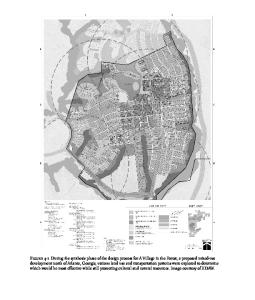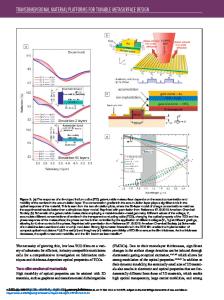Process Design and Material Development for High-Temperature Applications
- PDF / 171,377 Bytes
- 2 Pages / 593.972 x 792 pts Page_size
- 115 Downloads / 334 Views
https://doi.org/10.1007/s11837-020-04381-4 Ó 2020 The Minerals, Metals & Materials Society
PROCESS DESIGN AND MATERIAL DEVELOPMENT FOR HIGH-TEMPERATURE APPLICATIONS
Process Design and Material Development for High-Temperature Applications CHAI REN
1,3
and RAVI K. ENNETI2
1.—Xiamen Tungsten Co. Ltd, Chengdu, China. 2.—Global Powders, Towanda, PA, USA. 3.—e-mail: [email protected]
Due to their high melting points, refractory metals and materials are excellent candidates for use in many high-temperature applications such as heating elements, insulation screens, propulsion systems, and plasma-facing components. They are also widely used as additives or substituents in other material systems to improve their functional or structural performance at elevated temperature. However, as most refractory materials share common drawbacks such as room-temperature brittleness, sophisticated material designs and systematic analyses are always highly valued. Besides material studies, the development of processing technologies shares the same level of importance. Fabricating parts from refractory metals and materials is generally difficult due to their high melting point and low ductility. Powder metallurgy and thermomechanical processes are some of the choices available for industrial-scale production of parts from refractory metals. Recent progress in advanced processing methods such as additive manufacturing may lead to enhanced material performance or increased production efficiency. Studies on improving conventional technologies or the development of novel processing approaches are essential. This 2020 special topic on refractory metals and materials focuses on the latest experimental and theoretical advances related to refractory materials for use in high-temperature applications. The papers are mostly devoted to the challenges in producing these materials in an innovative way with optimized functionality. Contributions include carbothermal reduction to form carbides, increasing
Chai Ren and Ravi K. Enneti are Guest Editors for the Refractory Metals and Materials Committee of TMS and coordinated the topic Process Design and Material Development for High-Temperature Applications in this issue. (Received September 8, 2020; accepted September 9, 2020)
Tungsten
and
the decomposition temperature using additives, refractory addition, and process control to enhance high-temperature and mechanical properties. Molybdenum carbide shows an excellent combination of good wear resistance, low reactivity, and high melting point, making it a widely used coating and reinforcement material for application in hightemperature environment. It is also used in catalysis and energy storage applications due to its unique electronic properties. In ‘‘Desulfurizer-enhanced carbothermal reduction of MoS2 to synthesize Mo2C,’’ Chang et al. discuss a novel approach to synthesize Mo2C by carbothermal reduction with Na2CO3, CaO, and Fe2O3 as desulfurizer. By addition of desulfurizer, this process shows clear advantages, as it decreases the reacti
Data Loading...











